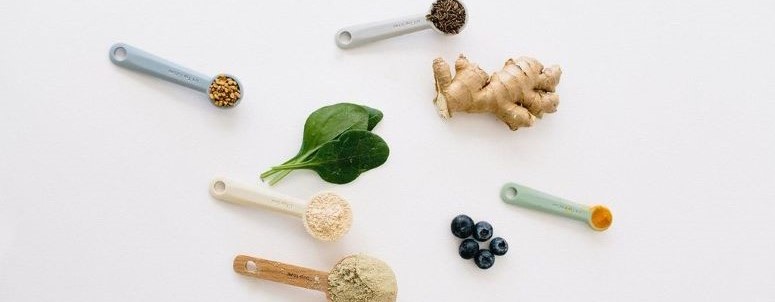
How Do Galactagogues Work?
Things are always better in color, right? Colorful photos, colorful fashion, colorful makeup palettes, and for today’s extra special treat—colorful galactagogues, or more specifically, the rainbow of galactagogues.
What is a Galactagogue?
Oh galactagogues, how we love you so. If you don’t know what a galactagogue is, here’s the breakdown.
Galactagogues—stemming from the Greek term galacta meaning milk—are substances that help increase a nursing mother’s milk supply.
How Do Galactagogues Work?
The natural compounds and properties in these magical milk makers can sometimes mimic hormones that stimulate breast milk production or just give your body the nutrients it needs to boost your milk supply. Galactagogues can be found in herbs, lactogenic foods, or lactation supplements.
Types of Galactagogues
Keep in mind that there isn’t a “prime” way of getting galactagogues into your breastfeeding diet. Herbs (plants and root like turmeric and milk thistle), foods (think spinach or almonds), or supplements (protein powders and teas) are great options and if you have any questions, speak to your lactation consultant for specialized guidance. Whichever option you decide are the best for you, adding these lactogenic foods, herbs, or supplements pumped with galactagogues will help make your breastfeeding life loads easier. And as mamas, we could all use things that make life easier. (Can we get an amen?)
Because we at Majka are not only concerned about your health and education, but also like when education is presented in the form of dazzling visual eye-candy, we’ve put together this oh-so-pretty guide to the rainbow of galactagogues. In this splashy little guide, you’ll find a colorful assortment of galactagogues and a sprinkling of other handy bits o’ information.
Reds
Beets: In a 3.5 ounce serving, the amount of folate present in beets accounts for 20 percent of your recommended daily intake. Beets are packed with other essential nutrients as well as being a lactogenic food.
Red Raspberry Leaf: Often found in breastfeeding or lactation teas, red raspberry leaf is said to tone the uterus after giving birth and can boost milk supply and rebuild breast tissue.
Strawberries: Packed with vitamin C, studies have shown vitamin C supplementation while breastfeeding aided in more breast milk.
Papaya: Also a great source of vitamin C, potassium, and fiber. Something to note is that green papaya (unripe papaya) is often used as a galactagogue in Asia due to its ability to increase oxytocin hormones that boost milk flow.
Oranges
Carrots: High amounts of beta carotene that can be converted into vitamin A. A good source of antioxidants to improve immune function and breast milk supply.
Apricots: Fresh apricots are high in vitamin C and can help in relieving constipation. Dried apricots have higher levels of beta carotene, potassium, magnesium, iron, calcium, and phytoestrogens needed for lactation.
Turmeric: Known for its golden hue, this spice has been used in Ayurvedic and Chinese medicine for thousands of years. Turmeric is said to boost milk production, heal wounds faster, and minimize pain and inflammation.
Salmon: Loaded with omega-3 fatty acids and vitamin B12, salmon is also used among breastfeeding moms for increased milk production and may help reduce symptoms of postpartum depression.
Yellows
Chickpeas: Used since ancient Egyptian times to boost milk supply, chickpeas are a good source of protein and contain plant estrogens needed to help with lactation
Garlic: used for centuries to treat infection, digestion issues, and increase breast milk supply
Oats: Oats are said to contain plant estrogens that stimulate milk production while also containing Beta-glucan fiber that can help promote prolactin
Ginger: Ginger is known for its anti-inflammatory properties but also helps with breast milk supply and stimulating the let-down reflex needed to breastfeed.
Greens
Dark Leafy Greens: Greens that are darker in color such as spinach, kale, arugula, and collard greens are all known to have lactogenic effects and a good amount of iron
Fennel: Fennel contains estrogen-like properties making it a great herb for increasing milk production. Can be consumed in plant form or as fennel seeds.
Moringa: Moringa is loaded with essential vitamins and amino acids, and is especially high in iron. The leaves of moringa are natural galactagogues and scientific studies have shown women who incorporated moringa into their diet saw an increase in breast milk supply.
Alfalfa: A nutrient-rich herb that mimics the properties of estrogen which helps increase milk supply and can help increase the volume of breast tissue.
Shatavari: An herb typically used in China and India to aid in the production of milk supply by boosting prolactin, or the hormones that stimulates milk when breastfeeding.
Browns and Blacks
Almonds: Nutritious nuts that have high amounts of protein and calcium. Almonds are known as a lactogenic food, but has also been said to better the quality of breast milk by making it creamier and smoother.
Sesame Seeds: Sesame seeds are rich in calcium. Large black sesame seeds or light-colored sesame seeds that are husked work best when helping digestion and breast milk production
Black Tea: Although herbal teas while breastfeeding is typically considered safe, it is always best to consult your doctor or lactation specialist. Black tea has been said to improve lactation.
Anise Seed: Thought to “let down milk” in ancient Greek times, anise seed is often used as a lactogenic herb for breastfeeding mothers.
Brooke is a wellness specialist and writes about the journey into Motherhood. She has been writing for about 5 years now, and teaches yoga, meditation, and hosts yoga retreats around the world.